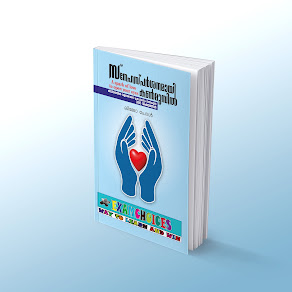WORKSHOP INSTRUCTOR/DEMONSTRATOR IN PRINTING TECHNOLOGY
SYLLABUS
TECHNICAL EDUCATION(CATEGORY NO.331/2013)
Part I:General Knowledge,Current Affairs and Renaissance
in Kerala
Salient Features of Indian Constitution
Salient features of the Constitution-Preamble-its
significance and its place in the interpretation of the Constitution.
Fundamental Rights-Directive Principles of State
Policy-Relation between
Fundamental Rights
and Directive Principles-Fundamental Duties
Executive-Legislature-Judiciary-Both at Union and State
Level.-Other Constitutional Authorities.
Centre-State Relations-Legislative-Administrative and
Financial Services under the Union and the States.Emergency
Provisions.Amendment Provisions of the Constitution.
Social Welfare Legislations and Programmes
Social Service Legislations like Right to information
Act,Prevention of atrocities against Women & Children,Food Security
Act,Environmental Acts etc.and social Welfare Programmes like Employment
Guarantee Programme,Organ and Blood Donation etc.
RENAISSANCE IN KERALA
Towards A New Society
Introduction to English education-various missionary
organizations and their functioning-founding of educational
institutions,factories.printing press etc.
Efforts To Reform The society
A.Socio-Religious reform Movements
SNDP Yogam,Nair Service Society,Yogakshema Sabha,Sadhu Jana
Paripalana Sangham,Vaala Samudaya Parishkarani Sabha,Samathwa Samajam,Islam
Dharma Paripalana Sangham,Prathyaksha Raksha Daiva Sabha,Sahodara Prasthanam
etc.
B.Struggles and Social Revolts
Upper cloth revolts.Channar agitation,Vaikom
Sathyagraha,Guruvayoor Sathyagraha,Paliyam Sathyagraha,Kuttamkulam
Sathyagraha,Temple Entry Proclamation,Temple Entry Act ,Malayalee
Memorial,Ezhava Memorial etc.Malabar riots,Civil Disobedience
Movement,Abstention Movement etc.
Role of Press in Renaissance
Malayalee,Swadeshabhimani,Vivekodayam,Mithavadi
,Swaraj,Malayala Manoram,Bhashaposhini,Mathrubhoomi,Kerala
Kaumudi,Samadarsi,Kesari,AlAmeen,Prabhatham,Yukthivadi,etc
Awakening Through Literature
Novel,Drama,Poetry,Purogamana Sahithya Prasthanam,Nataka
Prashtanam,Library movement etc.
Women and Social Change
Parvathi Nenmenimangalam,Arya Paliam,A V Kuttimalu
Amma,Lalitha Prabhu.Akkamma Cheriyan,Anna Chandi,Lalthambika Antharjanam and
others.
Leaders of Renaissance Thycaud Ayya Vaikundar,Sree
Narayana Guru,Ayyan Kali,Chattampi Swamikal,Brahmananda
Sivayogi,Vagbhadanada,Poikayil Yohannan(Kumara Guru)Dr.Palpu,Palakkunnath
Abraham Malpan,Mampuram Thangal,Sahodaran Ayyappan,Pandit K P Karuppan,Pampadi
John Joseph,Mannathu Padmanabhan,V T Bhattathirippad,Vakkom Abdul Khadar
Maulavi,Makthi Thangal,Blessed Elias Kuriakose Chaavara,Barrister G P Pillai,TK
Madhavan,Moorkoth Kumaran,C.Krishnan,K P Kesava Menon,Dr.Ayyathan Gopalan,C V
Kunjuraman,Kuroor Neelakantan Namboothiripad,Velukkutty Arayan,K P Vellon,P K
Chathan Master,K Kelappan,P.Krishna Pillai,A K Gopalan,T R Krishnaswami Iyer,C
Kesavan,Swami Ananda Theerthan,M C Joseph,Kuttippuzha Krishnapillai and others
Literary Figures
Kodungallur Kunhikkuttan Thampuran,Kerala Varma Valiyakoyi
Thampuran,Kandathil Varghese Mappila.Kumaran Asan,Vallathol Narayana
Menon,Ulloor S Parameswara Iyer,G Sankara Kurup,Changampuzha Krishna
Pillai,Chandu Menon,Vaikom Mohammad Basheer,Kesav Dev,Thakazhi Sivasankara
Pillai,Ponkunnam Varky,S K Pottakkad and others.
GENERAL KNOWLEDGE AND CURRENT AFFAIRS
General knowledge and Current Affairs
Part II a:Technical Mathematics
I.Matrices-Identification of Matrices,Matrix
operations,adjoint and inverse.
II.Determinants-Evaluation of second and third order,minors
and cofactors,solutions of simultaneous linear equation in three unknown using
Cramer’s rule.
III.Binomial Series-Expansions using Binomial theorem.
IV.Trigonometric functions-Signs of functions in each
quadrant.Trigonometric values of angles,properties of trigonometric
functions,Applications of the identifies sin(A+-B),Cos(A+-B)and tan(A+-B)
V.Coordinate geometry-Equations to a straight
line-slope-intercept form,intercept form,Angle between two lines,condition for
two lines to be perpendicular,parallel
VI.Differentiation-Limits and continuity,derivatives of
functions,equation to tangents and normals.Maxima and minima of functions of
one variable.
VII.Integration of functions-Integration of different types
of functions.
VIII.Applications of integration-Area bounded by a curve and
X or Y axis,solutions of differential equations usint the method of variable
separable,solutions of linear differential equations of first order.
Part II b:Basic Civil Engineering
Materials:Brick-varieties and
strength,characteristics of good brick.Cement-varieties and grade of cement and
its uses.Steel –types of steel for reinforcement bars,steel structural
sections.Aggregates-types & requirements of good aggregates.
Concrete-grades of concrete as per IS code,water cement
ratio.Workability,mixing,batching,compaction and curing.
Construction:Parts of building-foundation-types of
foundations-spread footing,isolated footing,combined footing,Raft,pile and well
foundations.Masonry-types rubble masonry,brick masonry,English bond and Flemish
bond(One brick wall)
Surveying:Chain
surveying-Principles,instruments,ranging,and chaining survey lines,field work
and field book,selection of survey stations,units of land area.
Levelling:Levelling instruments,different types,bench
mark, reduced level of points,booking of field notes,reduction of levels by
height of collimation method(simple problem),Modern survey-instruments-Total
station,Electronics theodolite,Distomat.
Part II c:Basic Mechanical Engineering
The importance of IC Engines:Definition,Classification-two
stroke engines,four stroke engines,working of two stroke engines and four
stroke engines with the help of line sketches,comparison between two stroke
and four stroke engines,comparison
between petrol and diesel engines,function of fly
wheel,clutch,gearbox,propeller shaft and differential in power
transmission,explain with sketch the working of differential,briefly explain
power transmission of 4 wheel vehicle with line diagram.
The importance of Power Plants:
Introduction,classification of power plants-working of
hydroelectric power plant with schematic sketches-working of thermal(Steam and
Diesel)power plant with schematic sketches-working of nuclear power plant with
schematic sketches
Part II d:Basic Electrical Engineering
Review with discussion of electric current,Potential
difference,power,EMF,resistance and its laws,Ohms law and series parallel
circuit,electromagnetism,generation of AC and DC supply.
Idea of Basic electrical circuit:Electrical supply
and load and its functioning,division of voltage and current in a parallel and
series circuit-simple problems,units of power and energy,solution of DC circuit
with calculation of energy consumption in an
installation.
Circuit parameters:Resistance,Capacitance and inductance.AC
circuit with R,L,C.Simple solution of typical AC circuit with
resistance,impedance,power and power factor.
Electrical circuit of an installation:Earthing,lightning
protection.
Part II e:Essentials of Electronics Engineering
Active and Passive devices-review
only.LED-working,applications,comparison of LED lighting and CFL lighting.Full
wave rectifier-diagram and explanation,5V power supply-with bridge rectifier
and 7805.SMPS-block diagram and advantages.Integrated
circuits.SMDs-advantages.Static electricity-precautions in handling electronic
circuits.
Switches:ON/OFF,push to ON.Push to OFF,push to ON/OFF
SPST,SPDT,DPDT.Working and application of limit switches,proximity
switches,relays.
Microcontrollers:Simple block diagram of 8 bit
microcontrollers-application.
Mobile Technology:CDMA and GSM.Compare-2G and 3G
technologies.
Inverter & UPS:Block diagram.Compare-inverter and
UPS Online and off line
UPS:Differentiate,Battery selection for UPS and inverter.
E-Waste:Health hazards of e-waste
Part III:Paper,ink and Auxillary Materials for printing
Paper-Raw materials,paper manufacture,paper
characteristics,paper grains,paper sizes,water marks,testing methods,physical
and chemical properties,warehousing
Ink-constituents,ink manufacture,qualities,drying
methods,types of inks,characteristics,ink testing methods,physical and chemical
properties.
Auxillary materials-Blanket,plate-characteristics and
types,strength of materials and material properties/
Press management factors,Eco friendly and lean production
parameters.
Part IV:Managing Fonts and Type ,Page Layout,Formatting
and Halftoning
Fonts,terms and definitions,units and measurements,kinds of
fonts,font in bitmap,vector and layout programs,Print design
considerations,formats-graphic types,file formats,post scripts,half
toning-pixel to half tone dots,digital dots,scanners,dot gain and
loss,bitmap-resampling and resolution,working with
images,archiving,gamut,pantone,vector graphics-gradients and
banding,patterns,colour mode,spot colour etc,page layout-page layout
capabilities,job organization,Preflight,planning,estimating and scheduling.
Part V:Prepress Requirements,Colour Management-PDF,RIP
and Proofing
Prepress requirement-System and
accessories,CTP,CTF,CTM,Colour balance,colour correction,RGB to CMYK conversion,ideal
digital document,compression in PDF,choosing compression,working with colour in
PDF,RIP-RIP and preflighting,proofing-prooding method,digital proofers,press
proof,CIE Lab and Values,Colour problems,various surface preparation
techniques.
Part VI:Press –Offset,Gravure,Flexo,Screen,Digital and On
demand Variable Data Printing
Offset-Machine design
considerations,types,operations,Gravure-design considerations,types,suitable
works for gravure Flexo-machine design,types how flexography works,what for
mainly used ,Digital printing-digital printing machines,how digital printing
works,what for used,Screen printing-types of screen printing machines,how
screen printing works,what for mainly used.Advantages and disadvantages of
offset,Gravure,Screen,Flexo and Digital printing.Ondemand and variable data
printing-workflow,data mail formats.Quality and quality assurance in
printing-various targets used.Future trends in printing.
Part VII:Post Press-Binding,Finishing and Packaging
Operations
Binding-tools,materials and equipments,material
calculation,qualities required,sewing methods,book binding operations,end
papers,indexing, special protective coating,coating on printed surface-aqueous
coating,electron beam coating,ultraviolet coating etc.
Post press machines-Packaging-tools,materials and
equipments,qualities required,dyes for packaging,packaging machinery,types of
packages,packaging considerations,specialized finishing techniques.
NOTE:It may be noted that apart from the topics detailed
above,questions from other topics prescribed for the educational qualification
of the post may also appear in the question paper.There is no undertaking that
all the topics above may be covered in the question paper.










The important thing is to learn a lesson every time you lose.Life is a learning process and you have to try to learn what's best for you.-John McEnroe.
ReplyDeleteKERALA PSC ,UPSC Civil service online practices available .Don’t forget our Youtube Channel Subscribe.